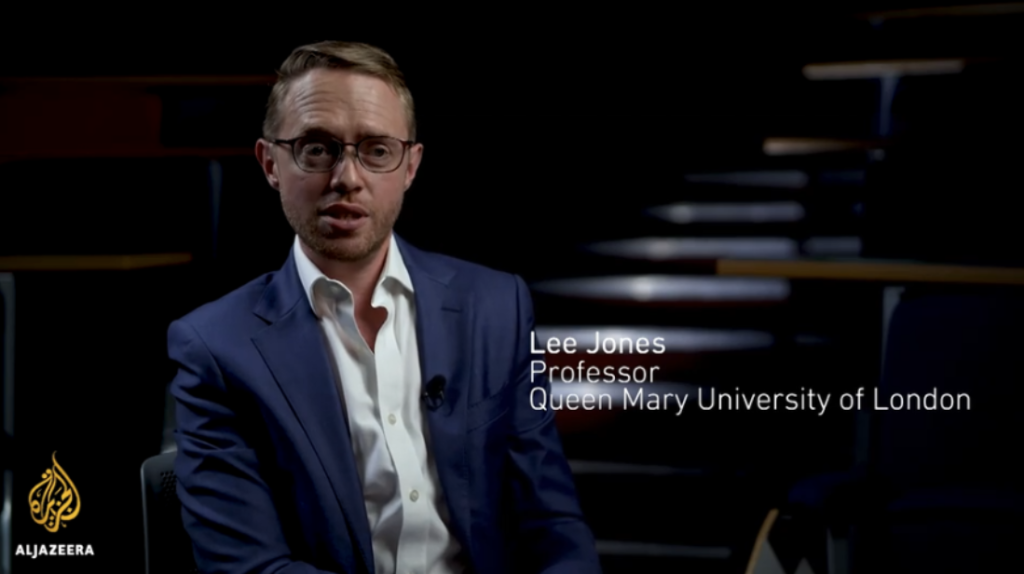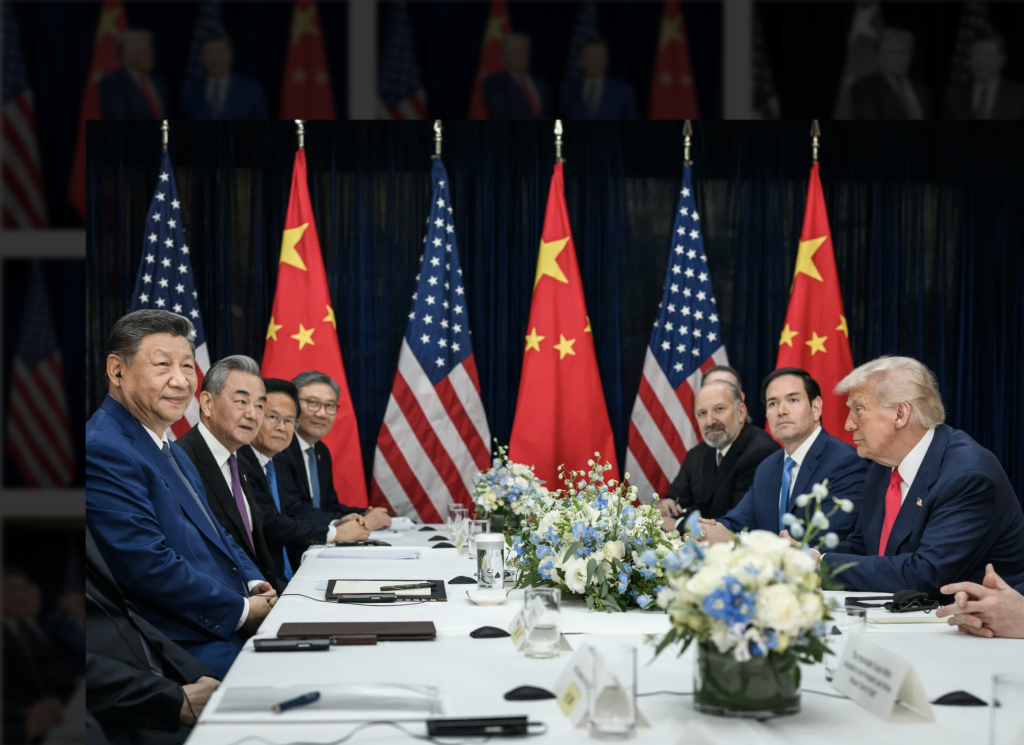Connecting the Dots- the U.S.’ Answer to the BRI?
Rob La Terza
On November 4, the U.S., Japan, and Australia jointly announced the Blue Dot Network infrastructure program at the Indo-Pacific Business Forum in Bangkok, Thailand. While limited detail is available about the scope and focus of the program, the Blue Dot Network, named after the book “Pale Blue Dot” (referring to the Earth’s appearance from space) by famous astronomer Carl Sagan, is clearly an attempt to present an alternative to China’s Belt and Road Initiative and to limit China’s influence in developing countries. It comes after the passage of the BUILD Act in 2018, which established the U.S. International Development Finance Corporation (USIDFC). The USIDFC will expand upon the roles of the U.S. Overseas Private Investment Corporation (OPIC), which itself will reorganize into the new USIDFC. CSIS writes that USIDFC is “absolutely” part of the U.S.’ response to China’s increasing global influence. Compared with China’s “large state-to-state lending” model, USIDFC “offers a private sector, market-based solution.” It can also support smaller businesses than China typically works with and help corporations within the country receiving aid, which China typically does not do. Unlike the BRI, the Blue Dot Network relies on private sector funding and has no lending capacity of its own. Rather than actively participating in infrastructure projects, the Blue Dot Network’s mission is to “vet and certify” infrastructure projects to ensure they promote “sustainable development.”
David Bohigian of OPIC pitched the Blue Dot Network as building infrastructure “to foster unprecedented opportunity, progress, and stability.” He also emphasized that infrastructure built under the Blue Dot Network would be high quality, as did Australian and Japanese government officials. The Network’s stated mission is to “evaluate and certify nominated infrastructure projects based on adherence to commonly accepted principles and standards to promote market-driven, transparent, and financially sustainable infrastructure development in the Indo-Pacific region and around the world.”
Bohigian highlighted the differences between the Blue Dot Network and the BRI, specifying that infrastructure development is beneficial “when it is led by the private sector and supported on terms that are transparent, sustainable, and socially and environmentally responsible.” U.S. State Department Under Secretary for Economic Growth, Energy, and the Environment Keith Krach doubled down, saying that the Blue Dot Network draws attention to the importance of global trust standards, “which are based on respect for transparency and accountability, sovereignty of property and resources, local labor and human rights, rule of law, the environment, and sound governance practices in procurement and financing, have been driven not just by private sector companies and civil society but also by governments around the world.” The comments made by U.S., Japanese, and Australian leaders clearly illustrate the Blue Dot Network’s fundamental goal of providing a strongly contrasting alternative to the BRI. Without naming China or the BRI, Bohigian and Krach specifically addressed concerns about the quality of BRI infrastructure projects and about China’s unethical practices. US National Security Advisor Robert O’Brien commented that the Blue Dot Network would buck the international trend of low-quality projects catching signatories in “debt traps,” another rebuke of the BRI. He also described the Network as being like a “Michelin Guide” evaluating infrastructure investment programs. While the Blue Dot Network is unlikely to sway China’s allies or BRI signatories (the World Bank estimates that over 125 countries have signed BRI agreements) , it may give countries looking for infrastructure aid but concerned about China’s long-term ambitions another option.
When he announced the Blue Dot Network, U.S. Commerce Secretary Wilbur Ross reassured listeners that “We [the US] have no intention of vacating our military or geopolitical position,” despite President Trump’s isolationist tendencies. Ross remarked that although the Network is still developing, it will “include countries committed to ‘sustainable infrastructure development.’” As of now, the Network is slated to work primarily in the Indo-Pacific region, but the China-Africa Project wrote that Ross’ comments “also apply for what the United States likely has in mind for other developing regions including Africa.” Aubrey Hruby, Senior Fellow of the Atlantic Council’s Africa Center, noted the clear differences between the Blue Dot Network and the BRI, tweeting “It’s a multinational certification effort. Not clear yet how much financing will be backing it yet. But a clear delineation (incomplete sentence). The US will focus on standards while China works on speed.” No financing information or detailed plans have been officially released regarding an expansion of the Blue Dot Network into Africa, but a total of $17 billion ($10 billion from Japan and $7 billion from the Asian Development Bank) has been promised to Asian energy infrastructure products. The Japanese investment will focus on liquefied natural gas. However, the specifics of the pledged $7 billion Asian Development Bank investment have not been announced. Unless future investments greatly expand upon or surpass the first projects, the Blue Dot Network will be far smaller in scale and limited in scope compared to the BRI.
The Blue Dot Network will certainly appeal to China skeptics looking for an alternative to the BRI, but the Network will have to greatly expand if the U.S. hopes for it to become a true counterweight to the BRI. The U.S. should also keep in mind that, while beneficial, an excessive focus on standards could slow down infrastructure projects and incentivize countries prioritizing speed to turn to China. Though the U.S. may have created the Network to limit China’s influence, this may ultimately harm the U.S.-China relationship. If the two infrastructure initiatives work against each other, the U.S. and China will become further entrenched as geopolitical adversaries with separate spheres of influence. However, cooperation presents a more productive path forward. While the U.S. is too skeptical of the motives behind Chinese technological development aid to work with China on building telecommunications infrastructure, many other sectors would be fair game. Green energy, for example, is a priority for both countries. Providing green energy infrastructure to developing countries lowers the world’s total carbon emissions, thus benefitting everyone. To borrow one of Xi Jinping’s favorite phrases, U.S.-China collaboration on clean energy would be truly be a form of “win-win cooperation.” While this would require some technological exchange, the environmental benefits greatly outweigh the concerns associated with U.S.-China technology transfer. Washington and Beijing policymakers should consider cooperation- through working together, the BRI and Blue Dot Network could help bridge the gap between the nations.
Rob La Terza is an intern in The Carter Center’s China Program. The views expressed in this article are those of the author and do not necessarily represent those of The Carter Center.








